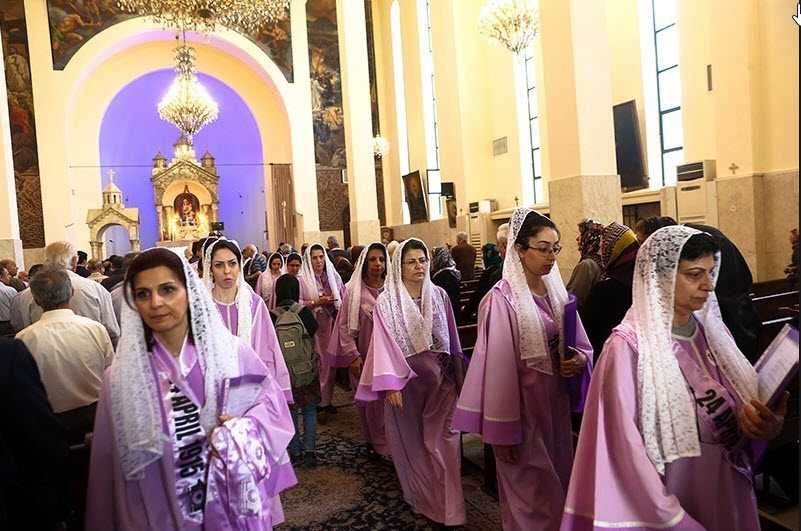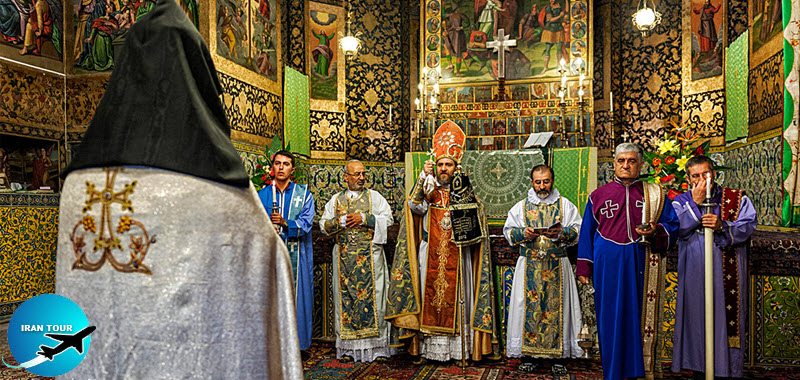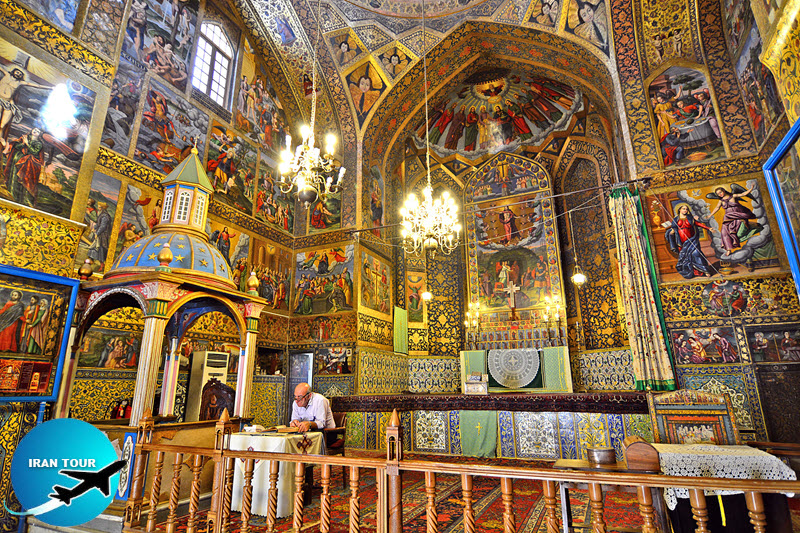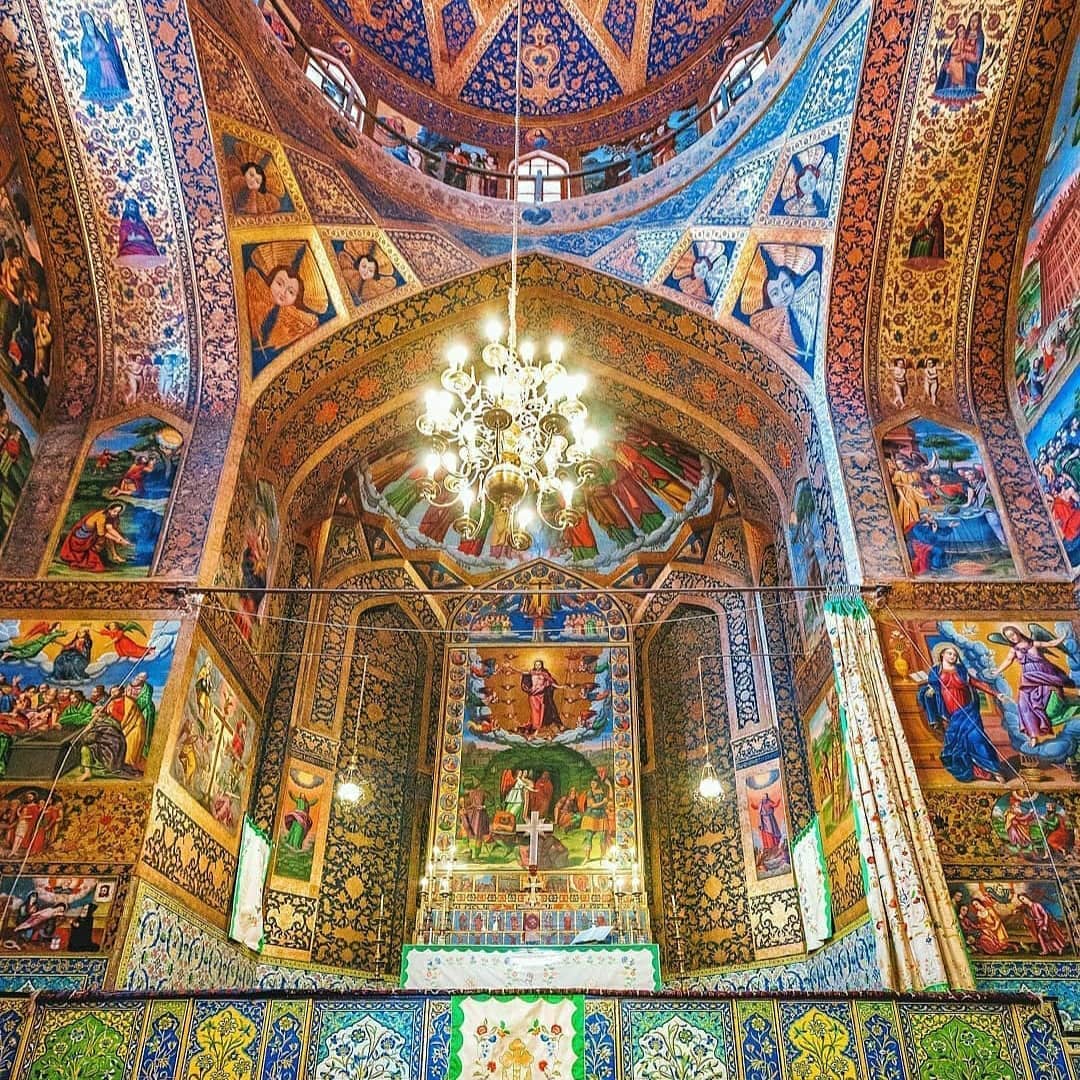Copyright 2020 - 2021 irantour.tours all right reserved
Designed by Behsazanhost
All About Armenians' Migration to Isfahan
The Armenians of Julfa (Aras) The Instigators for the Freedom of the Northwestern Parts and Economical Blossoming of Iran
After the appointment of Esfahan as the capital by Shah Abbas I, in 1591 A.D., until the capital was relocated from Qazvin to Esfahan, he was always at war with the Uzbeks and Portuguese, in the north and south respectively, and in the superpower of the age, the Ottoman Empire on the west. They had occupied some parts of Iran during the reign of Shah Abbas's father, and he was the heir to those struggles.
The Safavid king paid attention closely to the Uzbeks and Portuguese first and the second, after their expulsion from the lands, focused on the Ottomans later. During this period, he encountered a large number of immigrants, who were the targets of tremendous cruelty by the Ottomans from the occupied lands on the northwest parts.
 |
In 1600 A.D., a high-ranking group from Armenia came to Esfahan to invite Shah Abbas I, to release Armenia-a changing point for the king about the northwestern lands. He accepted their invitation gladly. The heads of this group were Melikset, Manuel, Geghard, and Tadev who offered precious gifts to the king, and in turn, were received warmly and given promises to be joined to Iran again. Finally, in September of 1603 A.D., Shah Abbas I, pretended that he wanted to go hunting in Mazandaran with a limited number of his best soldiers, but instead, they moved fast towards Tabriz, Nakhichevan, and finally Armenia to free those territories. The people of those regions were so surprised that for receiving Shah Abbas I, in Armenia, they spread precious carpets and silk textiles on their way between the Aras River Bridge and the house of Khaje Khachic. The king found enormous economic potential in Armenia. For example, one of the gifts presented to the king was a tray filled with gold coins that Khaje Nazar, one of Khachic's sons, offered to the king.
At that moment, Shah Abbas I, was faced with these problems: first, he knew that the Ottomans enjoying an army of more than 200,000 well-equipped soldiers were ready to take back the released lands. Second, he didn't want to miss the high economic opportunities of Armenians by the knowledge that the Armenians were highly experienced in the field of international trade could revive the economy of the capital. Finally, he came up with the idea to deport Armenians from their homeland to decrease the motivation of the Ottomans about occupying the lands on the borders again. There are so many contradictory figures concerning the number of immigrants that in some references,
 |
After arriving in Esfahan, they were accommodated in the northwestern part of the capital, and the property right of those lands was formally donated to them. At the same time, the experienced team of builders and artists were at the service of the Armenians in Esfahan, and according to history, their new town was called; New Julfa. Armenians enjoyed a wide range of liberty, security, and relative independence.
The community was so highly favored by the king that, in some cases, he was accused of his willingness to Christianity. But, he was pretending so as to unify with the Europeans to exert dual pressure on the Ottomans (their common enemy) from the west and east. Armenians built 25 churches in New Julfa, inter alia, 13 still remain in good condition after four centuries. The administrating system of Julfa, it was a self-administration by Khaje Nazar under the supervision of the central government. The family of Khaje Khachic was so powerful and rich that they could play an influential role between the Armenians and the central administration. After the death of Khaje Nazar in 1636 A.D. his son, Khaje Sarfaraz was appointed as the head of the community. According to history, Marnan Bridge was built by Sarfaraz and that is why in some references his name is used for the bridge.
Armenians enjoyed a long-term experience of trade with Europe because they were commercially-minded people and had the same Christian cultural commonalities for more success in this field. According to the travelogue of Chardin, the French traveler, never had he seen anywhere such a well-organized town as New Julfa, and he adds that in this region he could find more than 140 private houses which were as fine as the roval palaces in Esfahan. There is a story that goes: One day, the head minister of Shah Abbas II, reported to the king, "Your Majesty, do you know that in your lands where you are the Emperor, some citizens are richer than you?” And when the king was amazed and wondered to know who was so rich he replied. Khaje Petros Vellijantan reported that if he changed all his capital to silver coins and put them in bales and put in the 21 sluices of the Khajou Bridge, the passages of water in the Zayandeh Rood would be blocked.
According to history, except in New Julfa only a limited number of Armenians were accommodated in some other quarters of Esfahan, but they were later transferred to New Julfa, too. Armenians established their own training system in New Julfa consisting of an international trade school headed by Gostant who had listed, the trade partners of the Armenians all over the world, and this list is still available.
 |
-Julfa Quarter and its Armenian Churches
To accommodate the Armenians, who immigrated from Aras Julfa to Esfahan, a new parish was established for them called; New Julfa. Much liberty and concessions were granted to this community to practice their own religious and traditional ceremonies. Then, the Armenians appointed their own administrator to handle their affairs, and the land rights (demurrage) were conceded to them by the order of Shah Abbas I, as a particular residential area for the Christians in 1604 A.D. After their settlement in this region, they built gorgeous houses, schools, public bathhouses, arcade squares, covered bazaars, and caravansaries led to a piecemeal improvement in the transaction of business with merchants of different nationalities.
 |
At the same time, the role of religion was not disregarded. The first Armenian church founded in 1604 A.D. was called; Jacob (Hacop). Then, in 1606 A.D., another church was built, Amena Pergi. Afterward, the number of prayer halls, monasteries, and churches mushroomed rapidly. In 1655 A.D., a large cathedral was erected and used instead of Amena Pergaij, called; Vank (All Saviour's). The established churches in the region until the end of the 18th century A.D. exceeded 24. The Armenians of Esfahan are Orthodox and the followers of Saint Gregory, the Illuminator (the Gregorian church, is an independent Christian communion and one of the most ancient of the Orthodox Christians). Among the other Christian sects, they are of the first followers of the Apostle Church community who accepted this religion, by the efforts of Saint Gregory, at the beginning of the 4th century 302 A.D. Thereby, a different genre of painting, which was an amalgamation of Iranian, Byzantine and Armenian art employed as a decorative form, wherein Persian art appeared as the dominant one in architecture and art such as tilework, plasterwork, and painting.
In 1638 A.D., after the long-term endeavors of Khachatour Gesaratsi, the first printing house of the Middle East was established in the New Julfa. The first printed book was the Psalms of David (a copy of which is on display in the museum of the Cathedral). The Julfa Quarter, as a Christian parish, was chosen by foreigners of different nations, as a suitable area so that a large number of representatives of companies and travelers could be found there.
At present, the Armenian community has 8 educational centers, from kindergarten to senior high school, in Esfahan. The New Jolfa's bishop is the Right Reverend Shahin Sarkisian. The population of Armenian in Esfahan and Shahin Shahr is approximately 8000, but the total population of Armenian in Iran amounts to 130,000 which
The following is a list of 13 existing historical churches in Esfahan:
1.Saint Jacob (Hacop)-1604 A.D.
2. Amena Pergaij -1606, A.D.; expanded as Vank (All Saviour's) Cathedral-1655 A.D.
3. Saint George -1611 A.D.
4. Saint Mary -1613 A.D.
5. Saint Stephan (Sarkis)-1614 A.D.
6. Saint John the Baptist -1621 A.D.
7. Saint Catherine-1623 A.D.
8. Saint Bethlehem -1628 A.D.
9. Saint Nicholas-1630 A.D.
10. Saint Gregory, the Illuminator -1633 A.D.
11. Saint Minas -1659 A.D.
12. Saint Sarkies -1659 A.D.
13. Saint Nerses -1666 A.D.
- Details
- Category: Museums of Esfahan












